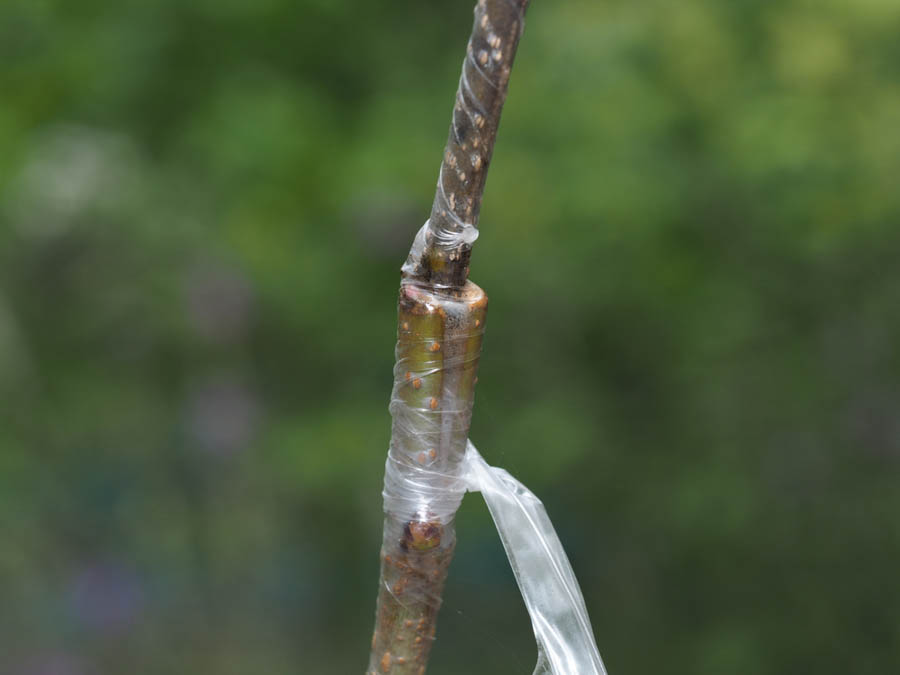Citrus Propagation: GardenZeus Advanced Topic

Home gardeners typically purchase citrus trees from their local garden center, but those up for a challenge can try their hand at citrus propagation.
Budding is the most common grafting technique used for citrus, with the bud inserted into a T-shaped cut on the rootstock. (See picture above.) Citrus are also whip grafted and bark grafted. For the home gardener, scions can be purchased online or from a local nursery, or obtained at local scion exchanges, such as at California Rare Fruit Growers chapter meetings and events.
Citrus can be grafted at any time of year that both the scion tree and rootstock are actively growing and not fruiting, preferably not directly after the fruiting cycle is completed, and when the weather isn’t hot. In many areas of California citrus grating is best done in early fall or late spring, but generally not later than May or June.
Orange trees and most citrus are unusual in that they produce polyembryonic seeds containing more than one baby plant, including clones of the mother tree as well as genetic cross(es) from pollination by another tree. These are called “nucellar” seeds. Three or more seedlings often grow from one citrus seed. The larger and more vigorous seedlings are generally clones of the mother tree, while the smaller and less vigorous seedlings are generally genetic crosses, usually with less-desirable fruiting and other characteristics than the parent tree.
When grown from seeds, orange trees may require 8 to 15 years or longer to bear fruit, and seedlings may be less vigorous and more prone to disease than grafted trees. Citrus seedlings are more commonly used for easy propagation of genetically identical citrus rootstocks.
GardenZeus has customized growing information by plant and zip code. To get started, enter your zip code here.
Other articles of interest:
Planting Citrus Trees: Proper Planting and Long-Term Health
Intensive Planting for Citrus Trees: GardenZeus Advanced Tip